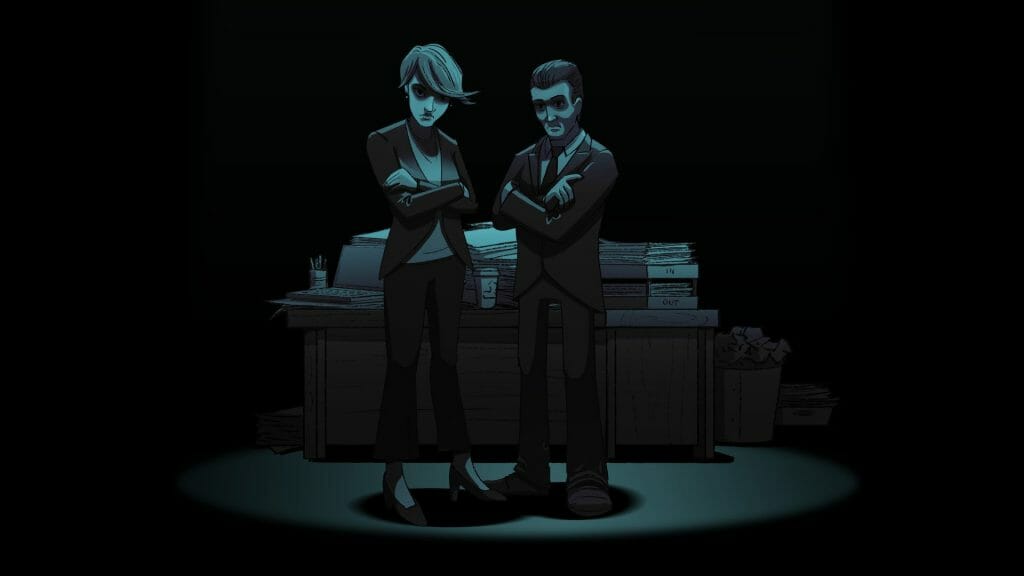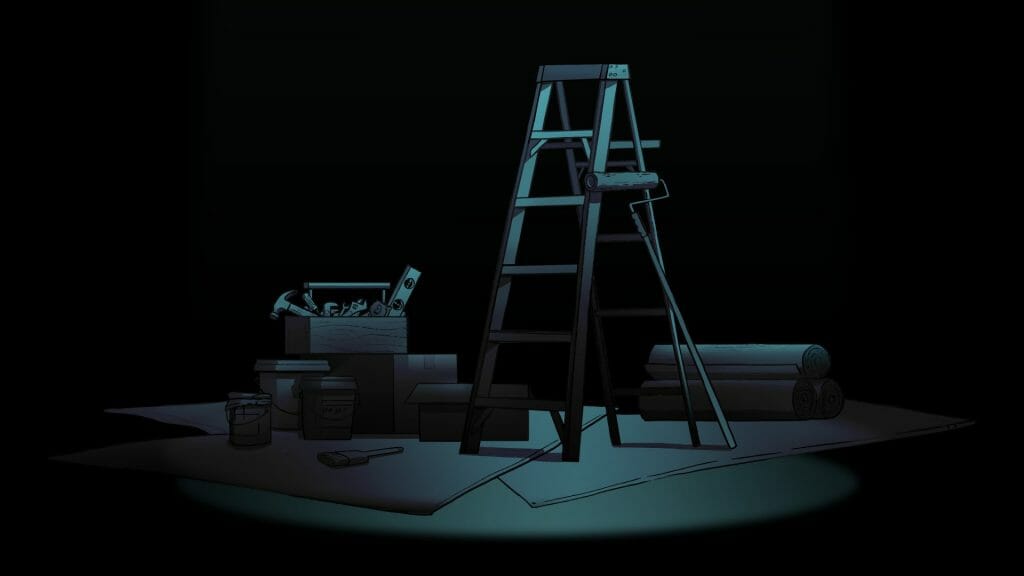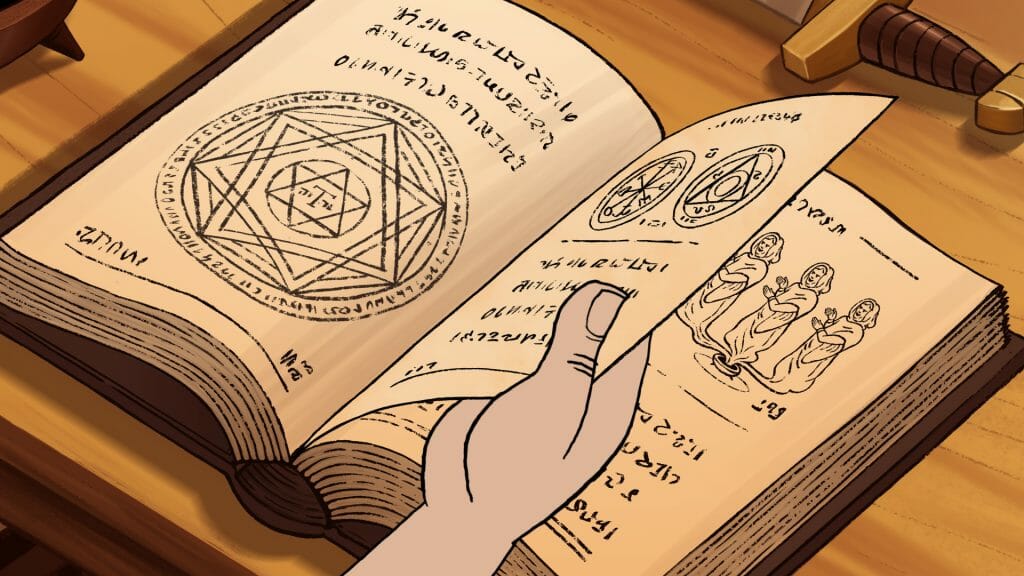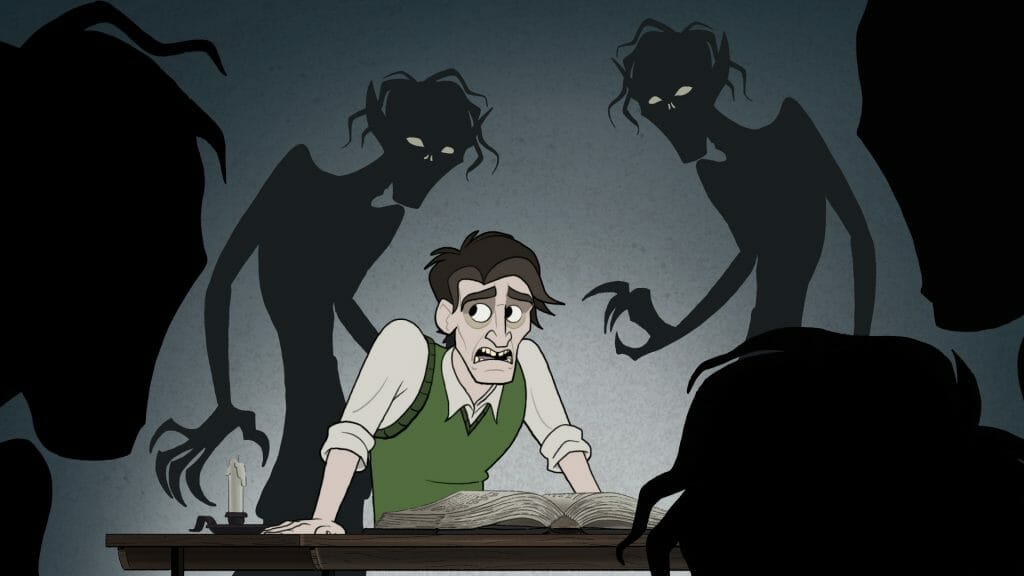Mercury Filmworks recently published another round of their Mercury Shorts series. One particularly illuminating example is The Conjurer, by illustrator and visual development artist, David Badour. This mysterious animated short contains a spooky sequence of illusions worthy of the magic circle. Currently working as one of the art directors on Hilda, David brings a wealth of experience from his role as Background Department lead at Mercury, and combines techniques to create the 2D tradigital style in The Conjurer.
Intended as cautionary tale about an unexceptional individual, David’s first foray towards horror fantasy draws inspiration from Shane Plante’s film, The Gate. After sharing early designs for The Conjurer, he summoned Shane to lend his eye for horror to the project. David started his storyboarding process in Storyboard Pro before imported the scenes into Harmony. He then enlisted character designer Jordan Voth to add a final layer of finesse to the design of The Conjurer’s protagonist.
David took time to answer some questions about The Conjurer and how it all came together. He was more than happy to open the book on his ideas, and his various inspirations that influenced the project, from Faust to Mickey Mouse. Read on to peek between the pages of The Conjurer, which you can watch below.
Please give yourself a brief introduction for our readers…
I’m an illustrator, visual development artist and background department lead at Mercury Filmworks. I started work as a background painter in the late 90’s, just as digital mediums were becoming industry standard. It was a great time to start because I was able to work professionally with traditional media, while seeing the advantages and potential of digital art. Since then, I’ve had the opportunity to work my way through several productions for clients such as CBC, TVO Kids, Disney TVA, and Netflix.
What is the premise of The Conjurer, and what is the message of the short film?
The Conjurer is a 2D animated short about an unexceptional individual. Beleaguered by everyday problems, our hero finds an unorthodox solution. Inspired by fictional characters such as Faust, Prospero, and Mickey Mouse in The Sorcerer’s Apprentice, this short is a cautionary tale about neglecting what’s important and the dangers of taking shortcuts.

How would you summarize the animation style we can see in The Conjurer?
I would describe it as 2d ‘tradigital’. A traditional approach augmented with simplified builds or rigs, and of course all the timesaving features found in Harmony.
Which Toon Boom software features or techniques were helpful in this short?
I found Storyboard Pro very helpful at the board and animatic stage. And I was impressed at how user friendly it is and how there are plenty of tips and resources available to help when needed. I started off boarding using the timeline in Photoshop, but quickly saw the advantages of Storyboard Pro. The scene export feature really stood out, especially the way you can export the boarded scenes directly to Harmony. It retained all the camera moves and separation, and made scene setup very easy!
I had a similar experience with Harmony — again plenty of instructional resources and support material to get started. Of course, I only scratched the surface, but part of the motivation was to gain ‘hands on’ experience with Mercury’s pipeline and apply what was learned to ongoing projects. With that in mind, incorporating Storyboard Pro and Harmony was crucial.

What is your day to day role in animation like?
I’m one of the art directors on Hilda. I oversee the design process from colour script through to compositing. The day to day is partially hands on, partially managing the design team. There’s also collaboration with the director and production teams to ensure we’re interpreting the storytelling vision through the visuals and colour.
How does this project differ from projects you’ve worked on previously?
The main difference is the story and content. Most of my career has been working on content for kids. This is my first time working in a fantasy-horror genre geared toward an older demographic. Also, in most cases, I’m helping to tell client’s stories, whereas on this project, I had the opportunity to tell a story I created.

What influence did Shane Plante have on this project?
I was inspired by Shane’s short, The Gate, produced in the first round of the Mercury Shorts Program. Seeing a colleague working in this genre made the idea of telling a story like this much more accessible. So, you could say he had an influence from the start. After I shared my animatic and some of the art direction with him, Shane offered to help. My experience as an animator was limited to mobile games, and similar small-scale projects, so I jumped at the opportunity to collaborate and gain some much-needed mentorship.
Shane helped in many areas, but his biggest influence is the scene where the main character is chanting. I had planned something less elaborate; not as much acting, no lip sync, and relying mainly on atmosphere to sell it. Shane suggested the more dramatic version of the scene we see in the final and was instrumental in its execution.
The short’s opening scene is an interesting sequence of memories taking place in a spotlight. Was there an inspiration behind this framing?
I needed a way to show our characters motivation – he’s overburdened by regular problems to the point where he attempts something drastic. The scene had to get the point across visually with minimal dialogue and animation. I drew some inspiration from the title sequence in Roman Polanski’s The Ninth Gate mixed with the idea of a spirit plane like Eleven’s remote viewing in Stranger Things. The addition of ghost-like wispy transitions helped set the mood and feeling for the outward scenes that follow.

With an expressive protagonist and some interesting, ghoulish characters, how did you approach character design on The Conjurer?
I wanted a middle-aged character, overburdened and world weary. I started off looking at Robert Valley’s work, partially for stylistic cues but also for the presence his characters have. My first attempts were too generic looking, and eventually I started asking myself who I’d cast for the role — if it were live action. Willem Dafoe was a natural choice, so I referenced him as the foundation of the character. With the main idea established, I had help from esteemed character designer, Jordan Voth. Jordan added some finishing touches to the character’s look and provided expression sheets and turnarounds.
The demonic characters were meant to be ghoulish echoes of the protagonist — he’s attempting a cloning spell which goes wrong. Early attempts did not strike the right balance of looking like our protagonist and providing a sufficiently appalling antagonist. This is also where Jordan helped finalize the look.
What inspired you to explore occult subject matter in The Conjurer? Why does this feel timely?
I’ve always enjoyed supernatural horror as a genre. Stories that build up a creepy atmosphere but leave some things to the imagination. It’s also a call back to when I was in college in the 90s. I was very interested in comic art from that era, especially artists like Dave McKean, Bill Sienkiewicz and Kent Williams who were pushing the medium at the time. I’m also a fan of comic writers from that era such as Neil Gaiman, Jamie Delano and John Ridgeway. Classical influences include Shakespeare’s The Tempest, Goethe’s Faust, the works of Edgar Allen Poe and the Golem of Prague.
The genre in this case wasn’t chosen to be timely, but I suppose everyone can relate to that feeling of being overwhelmed or needing to escape their everyday responsibilities. I think many folks would retreat to a hobby or interest to recharge, but it’s important not to take it too far, or neglect the things that are truly important.
- Have you conjured the skill required for a role at Mercury Filmworks? Visit the studio’s current job openings in Ottawa.
- Looking for other original shorts developed by talent at Mercury Filmworks? Be sure to visit the studio’s YouTube channel and read our other Mercury Shorts interviews.
- Ready to see more from David Badour? You can follow David on LinkedIn and be sure to visit his website.
The post David Badour opens the book on The Conjurer appeared first on Toon Boom Animation.
Courtesy: https://www.toonboom.com/david-badour-opens-the-book-on-the-conjurer






